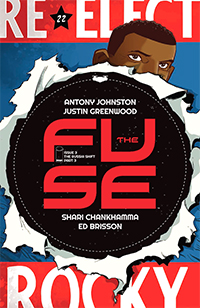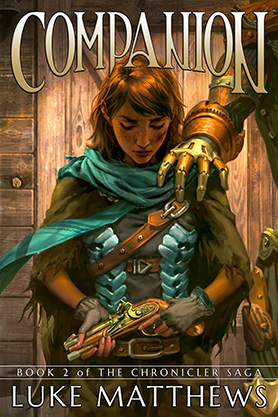I need to preface this review by saying that I like The Fuse. I like it. Try to keep that in mind, because it may not seem that way for a bit…
 I am a huge fan of Antony Johnston’s Wasteland from Oni Press. What makes Wasteland so fantastic is the world-building; the atmosphere. It’s not the singular most original post-apocalyptic tale in the world – a post-crash drifter falls in with a scrappy group of survivors-on-the-run – but the world and the atmosphere that Johnston weaves into Wasteland makes it so much more interesting than its base subject matter.
I am a huge fan of Antony Johnston’s Wasteland from Oni Press. What makes Wasteland so fantastic is the world-building; the atmosphere. It’s not the singular most original post-apocalyptic tale in the world – a post-crash drifter falls in with a scrappy group of survivors-on-the-run – but the world and the atmosphere that Johnston weaves into Wasteland makes it so much more interesting than its base subject matter.
That’s really what I was expecting with The Fuse. Unfortunately, I haven’t yet gotten that. We’re now three issues in, and although it’s a mildly entertaining murder mystery, it’s one that could’ve been set in any city, in almost any time period. The characters are so vanilla as to be easily transplant-able across genres, and the particulars of the story would take minimal adaptation to modern day, the old west, or medieval Europe.
It’s strange, really, to come across a story like this. The overarching ideas of the murder mystery – two lower-class citizens turn up dead, their murder unexpectedly linked to powerful elite – are so straightforward that I can’t really think of another setting in which it wouldn’t fit. Maybe that’s a testament to the timelessness of the story, but that’s not really what I’m getting from it.
The problem is that I’m just not connecting with the Fuse itself. The setting – an Earth-orbit space station large enough to be its own city – just isn’t felt enough in the story. Yeah, the victims are “cablers”, bottom-class citizens who live in the ductwork. Yeah, the “city” is full of effective refugees from Earth who came up to escape their history. But I just don’t feel it. I don’t know what it is, really, but I the atmosphere of a crowded space station just isn’t conveyed here.
Maybe it’s the artwork. I don’t want to blast Justin Greenwood for his art – structurally, it’s just fine. But so many scenes are in offices or medical facilities or someone’s desk, that I don’t get to see the actual Fuse enough. That, I think, rests on Johnston’s shoulders. We need to see more of the environment that normal Fuse-goers see. And even when we’re “outdoors”, I don’t get enough of the environment to make me go “Wow, that’s really a cool futuristic space station!” It’s all just kind of… blah.
The latest issue still pushes forward that murder mystery, and that part of the book is interesting. I almost wonder, though, if the book would be more engaging if it were set in a more vanilla setting and allowed the characters and plot to shine through. Setting this story in such a cramped, futuristic environment carries with it the expectation that that environment will be a major player in the plotline, and so far it just isn’t.
We get bits and pieces in issue three that help with the environment, but only a little bit. The murder mystery itself, through the first two issues, wasn’t quite enough to really set the hook in me. The story’s starting – just starting – to develop some momentum now, but I can’t help but wonder why the creative team bothered to write this tale into a futuristic, space-station setting like this.
I have a strong feeling, having read Wasteland and a bit of Umbral, that this story will pull together after 5 or 6 issues. Wasteland proved that Antony Johnston is skilled at – and fine with – the slow burn. Like I said at the start, I like The Fuse – but I’m not sure I’m willing to wait that long, when it comes to individual issues.
I like The Fuse. I do. But I desperately want to like it more than I do. The story is an interesting murder mystery. I’ll likely pick up the whole story when it comes out in trade. And, I guess, that’s my recommendation for other readers, too. I’m confident in Antony Johnston’s storytelling, but I’m not sure this particular story is suited for monthly episodes. Let’s just hope the atmosphere plays a bigger part in the coming months.

